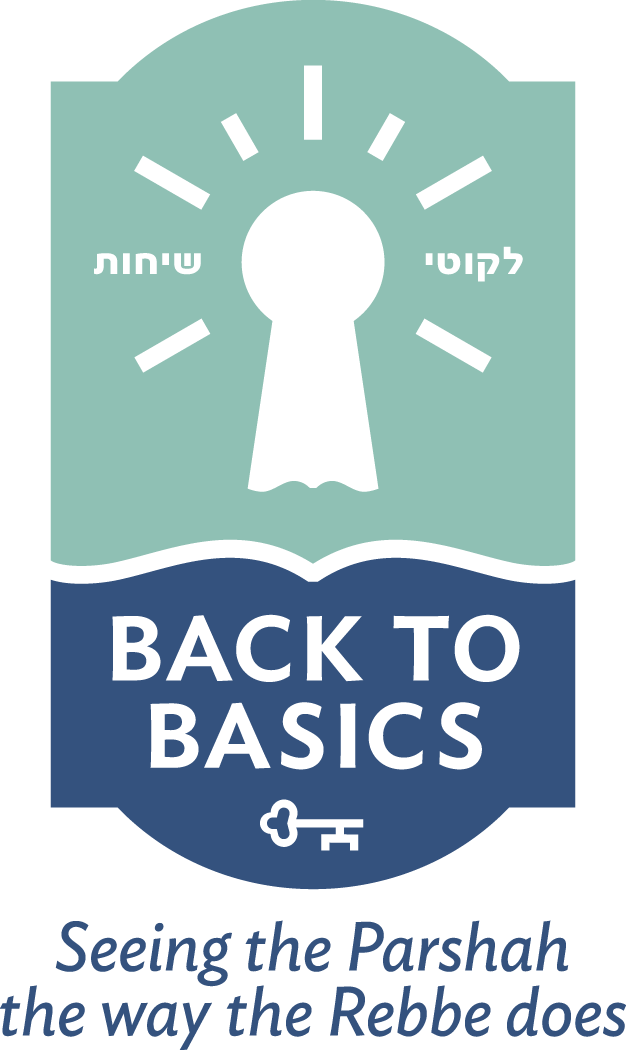Product
The best sichos classroom guide.
Buy Now!Back2Basics is a program/curriculum that allows students to learn and appreciate the Rebbe’s sichos and simultaneously teaches the skills/tools necessary in order for the student to learn on their own from the original Yiddish text. Highlights: • Empowers the students to think for themselves. • Color coded and easy to use! • Watch our video to learn about every detail! Read More
Other Images
Download A Sample Sichah
Parshas Noach - Teacher's Guide Parshas VayeiraProduct Description
Back2Basics is a program/curriculum that allows students to learn and appreciate the Rebbe’s sichos and simultaneously teaches the skills/tools necessary in order for the student to learn on their own from the original Yiddish text. It is a chavrusa based program that is maximized when the learning is done in pairs rather than in a typical classroom setting. This empowers the students to think for themselves and challenges them to come up with answers on their own. The targeted age is anywhere between 14-18, but the program has seen tremendous success both with younger children and adults. Our workbooks are the result of several years of fine tuning a system that engages the student and allows them to successfully learn independently.
Back2Basics Goals
1) For the student to build the necessary skills in order to learn a Yiddish sicha on their own and understand it well. 2) For the students to master the actual content of the sichos they will be learning in the curriculum. 3) For the students to identify with the horaos (lessons) the Rebbe teaches in the sicha and apply them to their lives. Every element of the b2b curriculum fits into one of these three categories and assists in attaining these goals.
Accomplishing the goals 1) Skill building will be attained by the students being required to master different skills every week. In each sicha, there will be a unique skill that the students will focus on. The program begins with the basics; sicha structure, rules of Yiddish, key words, and then moves on to more sophisticated words and concepts that are constantly repeated throughout the Rebbe’s Sichos. Additionally, there will be a list of translations of the more difficult words for the students to reference, a laminated card of the 100 most frequently used words in Likutei Sichos, a certain section of the sicha that will have a linear translation, as well as a flap that folds out of the front cover with the rules of how to read Yiddish for the students to have as a reference as they work their way through the sicha. These different elements transforms the learning experience from something tedious and aggravating, into a pleasant and enjoyable experience. 2) The comprehension will be attained by the students actually going through the sicha thoroughly and ensuring they understand it. There is a complete English translation of the entire sicha, broken up into parts, so the students can see which Yiddish paragraph matches which English part, as well as additional footnotes and explanations. The footnotes provide clarifying and insightful information, facts, history etc. that shed light on the concepts the Rebbe mentions in the Sicha. Obviously the goal is for the student to eventually be able to use only the Yiddish. 3) In order for the Sicha to become something personal and relevant and not remain an abstract idea, there will be letters of the Rebbe which show how the Rebbe connected that message to someone’s particular predicament or situation. There will also be questions in the review section which challenge the reader to think of the message of the sicha subjectively and apply them to their own life. There will be suggested discussion topics for the teacher to engage the classroom, stories for the teacher to relate that express the same lessons as the sicha, as well as creative writing competitions where students can write stories, essays, poems etc. that will express how they understood it in a personal way.
Ways for the teacher to assess whether their students have reached the stated goals. 1) The skills will be assessed by the students reading with each other and then reading with the teacher at some point. Additionally, every week there will be a review page where the students are required to do writing exercises that strengthen the skill they mastered that week. There is the “getting started” section at the back of each sicha which provides a certain part of the sicha with a complete linear translation with nekudos. A teacher may choose to make it mandatory for the students to be able to read that paragraph or two fluently every week. 2) The comprehension will be assessed by the student’s ability to answer the questions in the back of each sicha. The questions generally are very broad and general and cover the scope of the whole Sicha. There will also be a “flowchart” at the back of each sicha that. Not necessarily will every sicha have each of those, but the student should be able to identify where the rebbe begins answering questions, giving a hora’ah etc. There will also be suggested tests biweekly or monthly that will gage how well the students retained their knowledge. 3) There is no real way to know how personally a sicha affected a student. But much effort will be placed on emphasizing the importance of internalizing the rebbe’s words and how it should impact a person. We will provide discussion topics, stories and other material that will allow the teacher to open the mind of the students to see ways they can apply the sicha to themselves.
